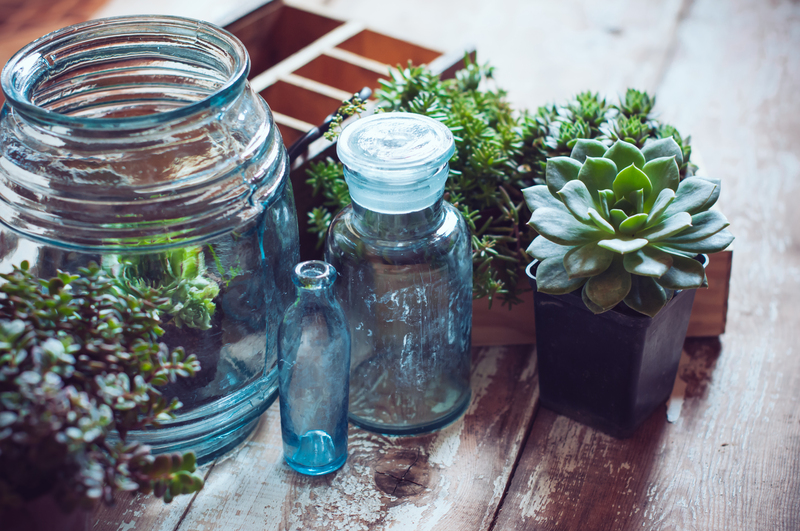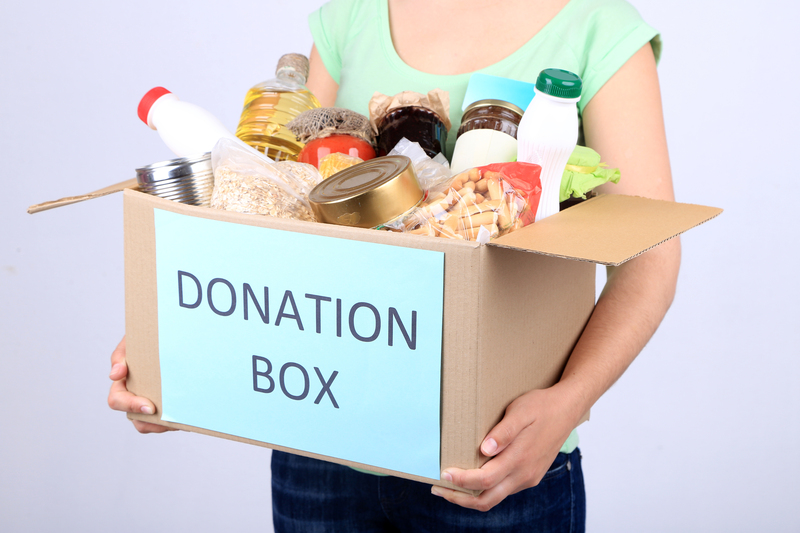Hazardous Plastics to Keep at Bay: A Comprehensive Guide to Protecting Your Health and the Environment
Plastics have become an integral part of our daily lives, offering convenience and versatility. However, not all plastics are created equal. Some types--known as hazardous plastics--pose threats to human health, wildlife, and the environment. This article explores the most dangerous plastics, how to identify them, why they are harmful, and provides practical strategies for minimizing exposure. By understanding which dangerous plastics to avoid, you can make safer choices for yourself and future generations.
Understanding the Seven Types of Plastics
The Society of the Plastics Industry (SPI) has categorized plastics into seven major types. Most products display a recycling symbol with a number from 1 to 7. While some are relatively safe when used correctly, others fall under the category of hazardous plastics to keep at bay.
- 1 - PET or PETE (Polyethylene Terephthalate)
- 2 - HDPE (High-Density Polyethylene)
- 3 - PVC (Polyvinyl Chloride)
- 4 - LDPE (Low-Density Polyethylene)
- 5 - PP (Polypropylene)
- 6 - PS (Polystyrene)
- 7 - OTHER (BPA, Polycarbonate, and Other Plastics)
Among these, several are identified as hazardous plastics due to their chemical composition and behavior over time, particularly numbers 3, 6, and 7. Let's explore why these plastics are dangerous and why you should aim to keep them at bay.

Top Hazardous Plastics to Keep at Bay
1. Polyvinyl Chloride (PVC) - Recycling Code #3
PVC is one of the world's most produced synthetic plastics. It's common in pipes, vinyl flooring, cling wrap, shower curtains, and certain toys. While its durability and versatility are advantageous, the risks associated with PVC are considerable.
- Health Risks: During production and disposal, PVC releases toxic chlorine-based chemicals. These can reach humans through air, water, or food, increasing risks of cancers, hormonal disruption, reproductive issues, and impaired immunity.
- Toxic Additives: To make PVC flexible, manufacturers add phthalates and other hazardous softeners. These can leach out and are linked to endocrine disruption and developmental problems in children.
- Environmental Impact: PVC is not easily recyclable. Its chlorine content and additives yield persistent organic pollutants (POPs), contaminating ecosystems for decades.
Advice: Avoid plastic #3 whenever possible. Use glass or stainless steel for food storage, and choose phthalate-free products for children's toys.
2. Polystyrene (PS) - Recycling Code #6
Better known as Styrofoam, polystyrene is widely used for single-use cups, plates, take-out containers, egg cartons, and packaging peanuts. While convenient, polystyrene is high on the list of dangerous plastics to avoid.
- Chemical Leaching: Polystyrene readily leaches styrene, particularly when heated. Styrene is a probable human carcinogen and neurotoxicant, affecting brain and nervous system health.
- Environmental Hazards: PS products break up into persistent microplastics that pollute soil, waterways, and oceans. These microplastics are ingested by wildlife and enter the human food chain.
- Non-Biodegradable: Polystyrene can persist in landfills and the natural environment for centuries, contributing to mounting pollution problems.
Recommendation: Say no to Styrofoam. Opt for reusable containers made from sustainable materials, and never microwave food in polystyrene packaging.
3. Polycarbonate and Other Plastics - Recycling Code #7
Category #7 covers a range of plastics that don't fit into the other groups, including polycarbonate (PC), which is widely used in water bottles, baby bottles, food containers, and the lining of metal cans.
- BPA Contamination: Many polycarbonate products contain Bisphenol A (BPA). BPA is a endocrine disruptor that mimics estrogen, leading to a range of health issues, such as hormonal imbalances, infertility, metabolic disorders, and increased risk for certain cancers.
- Leaching Concerns: BPA and related chemicals can leach into food and drinks when containers are exposed to heat or sunlight, or if they are scratched or worn.
- Long-Term Health Impact: BPA exposure, especially during fetal and early childhood development, has been linked to brain and behavior changes, as well as increased risk of heart disease and diabetes.
What to do: Avoid plastic #7, especially for food and drink. Seek out BPA-free products (though be cautious, as they may contain other harmful bisphenols).
Other Noteworthy Problematic Plastics
Other Plastics to Keep at Bay
- Plastic #1 - PET/PETE: Common for water and soda bottles. While considered safe for single use, repeated use can harbor bacteria and leach chemicals if exposed to heat.
- Plastic #4 - LDPE and #5 - PP: Generally safer, used in bags and yogurt containers. But microplastic shedding and additive leaching remain concerns.
*Tip*: Even with safer codes, limit plastic exposure, especially for food, and avoid heating any plastic products in microwaves.
Why Hazardous Plastics Are a Growing Concern
The discussion around dangerous plastics extends far beyond individual health. These materials have far-reaching implications:
- Public Health Crisis: Chemicals leaching from hazardous plastics can cause cancers, developmental disorders, and chronic illness.
- Wildlife Threats: Animals ingest plastic debris, leading to starvation, poisoning, and death. Toxins bioaccumulate in ecosystems and reach the human food chain.
- Environmental Degradation: Plastics are durable and resistant to breakdown. They persist in landfills, oceans, and soils, disrupting ecosystems for centuries.
- Microplastics Pollution: Breakdowns of larger plastic objects create microplastics, now found in drinking water, air, and seafood.
How to Identify and Avoid Hazardous Plastics
Check the Resin Identification Code
Most plastic products have a recycling triangle with a number (1 to 7). Use the guide above to recognize hazardous plastics and choose better alternatives.
- Avoid #3 (PVC), #6 (PS), and #7 (OTHER, especially polycarbonate)
- Minimize use of #1 (PET) to single-use, avoid reuse and exposure to heat
- Prefer #2 (HDPE), #4 (LDPE), and #5 (PP) for non-food applications, but still limit where possible
Be Wary of Unlabeled Plastics
If plastics lack a code, especially imported or 'no-name' products, err on the side of caution. Unknown additives and manufacturing processes could mean added risk.
Smart Ways to Reduce Plastic Hazards in Your Life
Switch to Safer Alternatives
- Use glass, stainless steel, or ceramic containers for food and drinks.
- Avoid reheating food in plastic containers of any kind--heat increases leaching risk.
- Say no to single-use plastics, like cutlery, straws, plates, and cups.
- Invest in reusable bags, bottles, and packaging.
- Choose natural fiber toys and baby products instead of plastic ones.
Proper Disposal and Recycling
- Recycle plastics according to local guidelines--never contaminate compost or paper recycling streams.
- Never burn plastics, especially PVC or polystyrene, as this releases toxic fumes.
- Participate in community clean-ups to prevent hazardous plastics from reaching waterways.
Special Considerations for Children and Pregnant Women
Infants and developing children are especially vulnerable to the chemicals found in hazardous plastics. BPA, phthalates, and other toxins can disrupt normal growth and development.
Prenatal exposure to these chemicals is associated with birth defects, neurodevelopmental delays, and immune system impairment.
- Never use old or scratched plastic bottles for formula or breast milk.
- Choose BPA-free products, and verify they don't contain alternative bisphenols (like BPS).
- Opt for glass baby bottles and silicone nipples.
- Favor wooden and organic fabric toys over plastic ones.
Are Bioplastics and 'BPA-Free' Plastics Safe?
The market now offers bioplastics and many items labeled as BPA-free. While these may seem like safer alternatives, it's important to remain cautious:
- 'BPA-free' doesn't always mean safe. Manufacturers may replace BPA with BPS or BPF, which can be equally hazardous.
- Bioplastics may still contain additives and are not always compostable or recyclable in local systems.
- Always check third-party certifications and research product composition before trusting new materials.
The Role of Policy and Consumer Action
Regulations on hazardous plastics vary globally. Some countries have banned or restricted certain uses of PVC, PS, and BPA-containing materials, but legislation is lagging in many areas. Consumer demand drives industry change.
- Support brands and stores that prioritize non-hazardous, sustainable packaging.
- Advocate for stronger regulations on dangerous plastics at local and national levels.
- Educate your community about the risks and alternatives to hazardous plastics.

Frequently Asked Questions About Hazardous Plastics
Are all plastics dangerous?
Not all plastics are equally hazardous. Plastics containing PVC, polystyrene, and bisphenol compounds are among the most hazardous, especially in food-contact or children's products. The key is to minimize exposure, especially to those on the high-risk list.
Can I recycle hazardous plastics?
Local recycling capabilities vary widely. Many facilities do not accept #3 (PVC) and #6 (PS), while #7 is often non-recyclable. Always check with your local waste management, and focus on reducing hazardous plastic use before disposal concerns arise.
What happens if I microwave food in plastic?
Heating plastic containers dramatically increases the leaching of chemicals into food or beverages. Always use glass or ceramic alternatives in microwaves, and especially avoid heating food in containers with recycling codes 3, 6, or 7.
Conclusion: Making Informed Choices to Keep Hazardous Plastics at Bay
Keeping hazardous plastics at bay is vital for personal health, the wellbeing of children, and the preservation of the planet. By identifying dangerous plastics to avoid--namely PVC, polystyrene, and polycarbonate--and taking steps to reduce your exposure, you make a significant difference. Choose wisely, support sustainable brands, and advocate for policy reforms. Your actions matter.
As awareness grows, you contribute not only to your own wellness but also to a global movement for cleaner, safer, and more sustainable living.